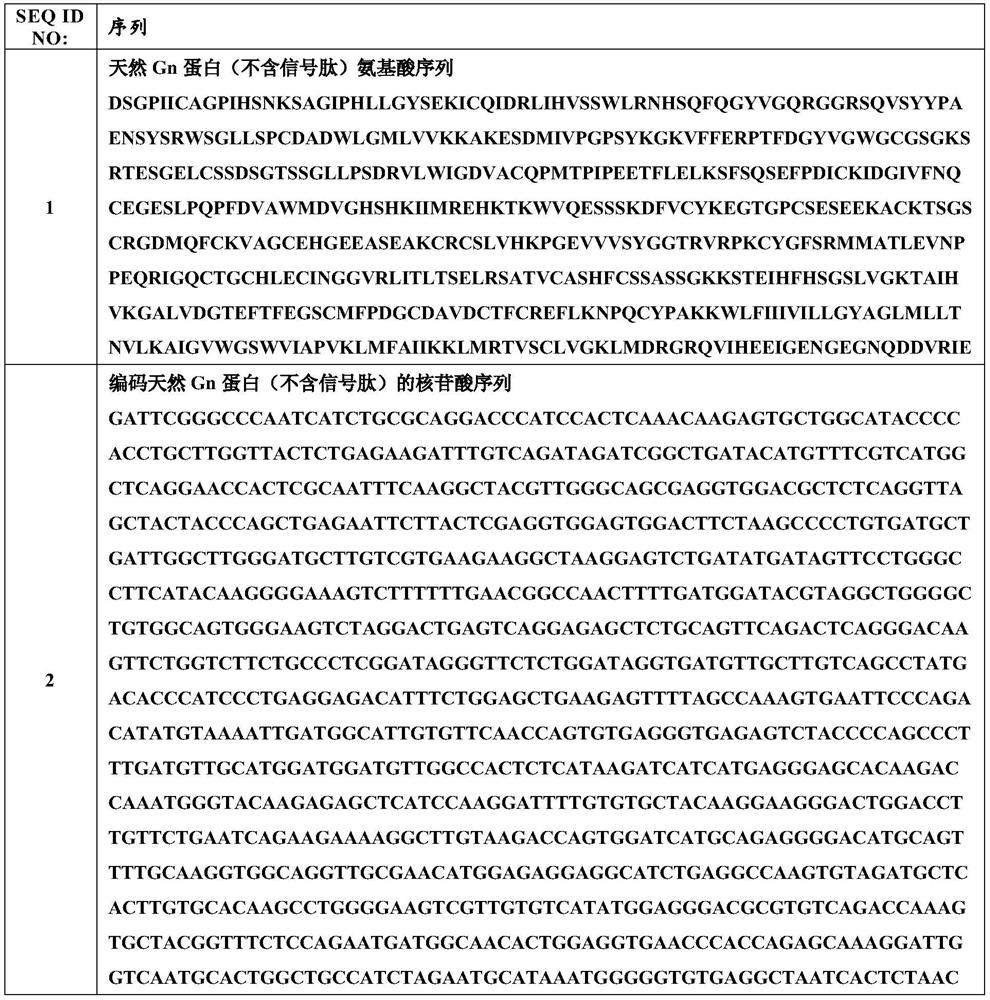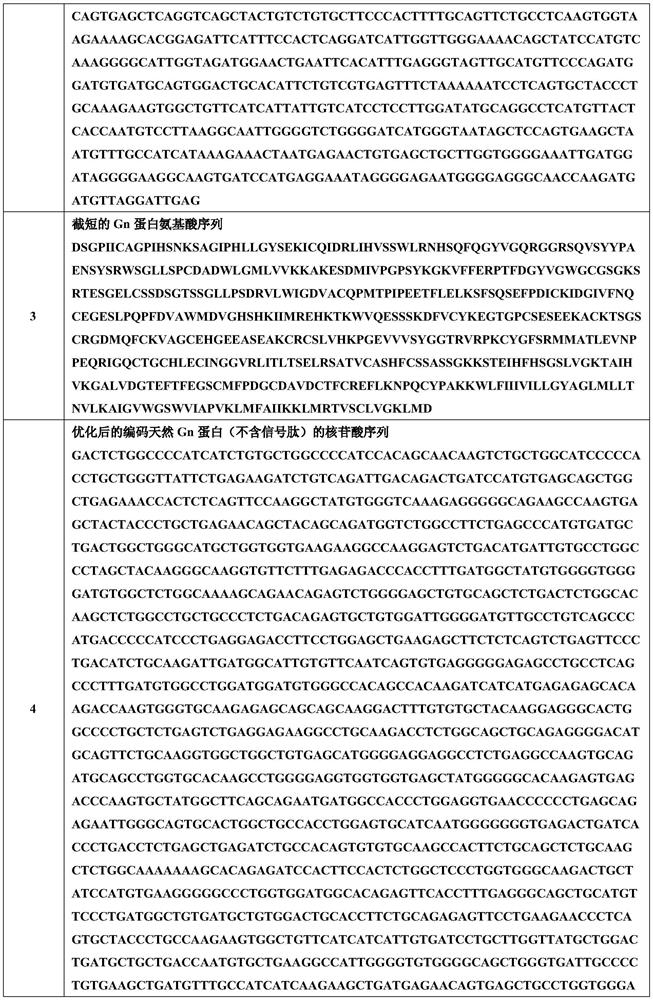Truncated Gn protein of severe fever with thrombocytopenia syndrome virus and application thereof
A syndrome and platelet technology, applied in the fields of genetic engineering and molecular biology, can solve the problems of increased toxic and side effects, difficult to achieve druggability, and many impurities, and achieve the effect of improving the expression level.
- Summary
- Abstract
- Description
- Claims
- Application Information
AI Technical Summary
Problems solved by technology
Method used
Image
Examples
Embodiment 1
[0089] Example 1. Construction of recombinant plasmids
[0090] For the sequence of the Gn protein used in this embodiment, refer to GenBank accession number HM745931.1, wherein the 1-19th amino acid is the sequence of the signal peptide of the natural Gn protein (SEQ ID NO: 10), and the remaining amino acid sequences are the natural Gn protein The amino acid sequence (as shown in SEQ ID NO: 1, its encoding nucleotide sequence is shown in SEQ ID NO: 2). The 24 amino acids at the C-terminal of the natural Gn protein were removed to obtain a truncated Gn protein (the amino acid sequence of which is shown in SEQ ID NO: 3).
[0091] According to the codon preference of human cells, the nucleotide sequences encoding the natural Gn protein and the truncated Gn protein were optimized to obtain the nucleotide sequences shown in SEQ ID NO:4 and 5.
[0092] Then, the 5' end of the nucleotide sequence shown in SEQ ID NO:4 and 5 is respectively connected with a nucleotide sequence enco...
Embodiment 2
[0096] Example 2. Production and detection of recombinant plasmids
[0097] In this example, construction and screening, fermentation and plasmid purification of conventional engineering bacteria were carried out. In short, the recombinant plasmids containing the sequences of SEQ ID NO: 6-9 were respectively transformed into host bacteria DH5α to obtain stable strains with high plasmid yields, which were preserved as engineering bacteria. The engineered bacteria were fermented, and the obtained bacterial liquid was centrifuged to collect the bacterial sludge, and purified according to the conventional plasmid purification method. After electrophoresis detection, the purity of the four plasmids obtained were all greater than 95%, the supercoiled content was greater than 90%, and the ratio of OD260 to OD280 was greater than 1.8, indicating that the quality of the plasmids met the requirements. The specific test results are shown in the table below.
[0098] Table 3. Plasmid ...
Embodiment 3
[0100] Example 3. Detection of Gn protein expression
[0101] 1. HEK293T cells transfected with recombinant plasmids
[0102] (1) Cell preparation: take the HEK293T cells to be transfected, inoculate them in a 24-well cell culture plate, 500 μl / well, and put them in 37°C, 5% CO 2Cultivate overnight in an incubator so that the cell confluency is 90-95% on the day of transfection.
[0103] (2) Plasmid transfection: For each well of cells, use 50 μL DMEM serum-free medium to dilute 2 μL Lipofectamine 2000; for each well of cells, use 50 μl DMEM serum-free medium to dilute the plasmid, add 0.8 μg of each of the above four recombinant plasmids; room temperature After incubation for 5 minutes, the diluted DNA and diluted Lipofectamine2000 were mixed gently. And keep warm at room temperature for 20min. The experimental group was: medium + plasmid + transfection reagent; the negative control group was: medium + transfection reagent; the above experimental group and control group ...
PUM
 Login to View More
Login to View More Abstract
Description
Claims
Application Information
 Login to View More
Login to View More - R&D
- Intellectual Property
- Life Sciences
- Materials
- Tech Scout
- Unparalleled Data Quality
- Higher Quality Content
- 60% Fewer Hallucinations
Browse by: Latest US Patents, China's latest patents, Technical Efficacy Thesaurus, Application Domain, Technology Topic, Popular Technical Reports.
© 2025 PatSnap. All rights reserved.Legal|Privacy policy|Modern Slavery Act Transparency Statement|Sitemap|About US| Contact US: help@patsnap.com



